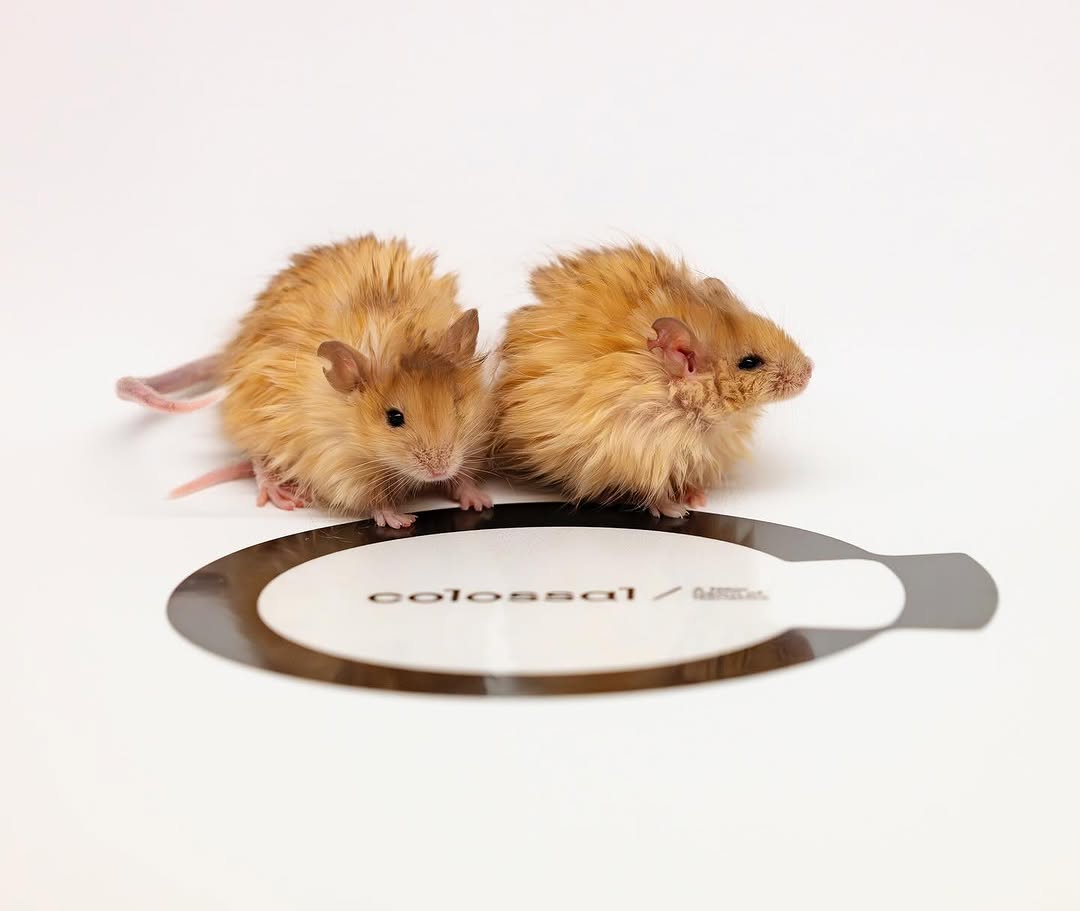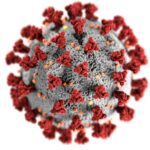Colossal Creates “Woolly Mouse” In Step Towards De-Extincting The Mammoth By 2028

There was a time when mammoths walked beside us—not as fossils or museum displays, but as living, breathing parts of the world. Then, they disappeared. Extinction once meant finality, the end of a story. But now, with breakthroughs in gene editing and synthetic biology, we’re trying to write a new chapter for a species long erased. In a Texas lab, scientists have genetically modified a mouse to grow dense, woolly fur—one step in Colossal Biosciences’ plan to bring back the woolly mammoth by 2028. Not fiction. Not metaphor. A real mouse. Real genes. A real attempt to reverse time.
But what are we really trying to resurrect? A species—or something deeper? Is this science reaching for possibility, or humanity reaching for redemption? The mammoth isn’t just an animal. It’s a symbol of memory, of loss, of our urge to fix what we once broke. And now, as the lines between extinction and revival blur, so does the line between progress and responsibility.
The Mouse That Grew a Coat
Before the mammoth returns, a mouse had to change. Not in myth or metaphor—but in skin, in cells, in the quiet language of genes. In a Texas lab, researchers altered a tiny, ordinary mouse into something new: an animal with dense, heat-trapping fur, unlike anything seen in its species before. The fur wasn’t just thicker—it was engineered to carry the warmth and texture of an Ice Age survivor. And that small shift, that one coat of fur, marks a big step toward bringing the mammoth—or something close to it—back to life.
To do this, Colossal Biosciences used gene editing to insert specific mammoth and elephant genes into the mouse’s DNA. Among them, the UCP1 gene, which enables heat production without muscle movement—a trait vital for surviving extreme cold. They also added skin-related proteins, like KRT1 and KRT5, which influence hair structure and growth. The result: a mouse with mammoth-inspired insulation, capable of withstanding much lower temperatures than its natural relatives. In short, they didn’t just create a woolly mouse—they created proof that ancient traits can be rebuilt in modern bodies.
This isn’t an isolated experiment. It’s a calculated step in Colossal’s larger plan to “de-extinct” the woolly mammoth by 2028. Not by cloning an ancient carcass, but by reprogramming the closest living relative—the Asian elephant—to carry traits of its extinct cousin. The goal is to create a hybrid that looks, acts, and survives like a mammoth, with thick fur, smaller ears, and adaptations to cold. For Colossal, this isn’t just about bringing back a species—it’s about reintroducing large herbivores into Arctic ecosystems, where they could help reshape the landscape, trample moss, disperse seeds, and slow permafrost thaw. But before any of that can happen, it starts here—with one mouse and a coat thick enough to carry a vision thousands of years in the making.
Memory in the DNA
The mammoth isn’t just a scientific target—it’s an icon of what the Earth once was. These animals roamed across vast, frozen landscapes in herds, shaping the ecosystem with every step. They weren’t passive relics of the Ice Age—they were active sculptors of their environment. Their absence left an ecological void, one that some scientists believe still echoes in the permafrost and plant life of today’s Arctic. Bringing the mammoth back, to some, is a way to bring balance back to these lands. But the mammoth also lives in our imagination. It represents loss, power, wonder—and now, a strange form of resurrection.
What Colossal is tapping into goes beyond biology. It’s a deeper hunger: the need to reconnect with something ancient, something we’ve lost. In reviving a mammoth, we’re not just bringing back an animal—we’re revisiting a story we never finished. And buried in that story is a question about who we are as a species. Are we caretakers of life, or are we its editors? If we now have the tools to rewrite what nature once ended, what rules, if any, guide that process? These are not just scientific inquiries—they are deeply human ones, wrapped in grief, curiosity, and the longing to repair.
There’s also something poetic—maybe even redemptive—about bringing the mammoth back through the elephant. Asian elephants, the mammoth’s closest living relatives, are endangered themselves. In a strange twist of fate, the past and the present might help each other survive. By blending mammoth genes into elephant embryos, Colossal isn’t just chasing a spectacle—it’s potentially offering a future to a species on the brink. The past and present braided together in one being, walking across the tundra. It’s a wild vision. But if it works, it could change the way we think about extinction—not as a door that shuts, but as one we might, carefully, learn how to open.
Science Fiction No More
For decades, the idea of resurrecting extinct species lived in the realm of science fiction. Stories like Jurassic Park warned us about the dangers of tampering with what’s gone. But the science that once belonged to books and movies is now playing out in real time. Gene editing tools like CRISPR have turned what seemed impossible into technical blueprints. We can now target, cut, and insert DNA with a precision that previous generations of scientists could barely imagine. The tools are here. The data is here. And the ambition? It’s louder than ever.
Colossal is at the forefront of this movement, and it’s not alone. Around the world, teams are attempting to revive extinct species—from the dodo to the thylacine—with funding from private investors and the promise of environmental renewal. What used to take lifetimes of theory can now be simulated, edited, and tested in years. This pace of advancement is breathtaking. And while mammoths are a bold headline, the underlying technologies being developed—artificial wombs, genomic libraries, scalable DNA synthesis—will have applications far beyond just one animal. We’re not just witnessing a scientific experiment; we’re watching the edge of a new biological era being written strand by strand.
But just because something was once fiction doesn’t mean it should remain fantasy. The stakes are high. Reviving extinct species opens the door to new questions about biodiversity, conservation, and intervention. It forces us to ask what role humans will play in shaping the future of Earth’s ecosystems—will we be architects, medics, or meddlers? And how do we reconcile the acceleration of such powerful tools with the still-ongoing damage being done to the living species already here? Bringing back the past doesn’t exempt us from responsibility in the present. If anything, it should amplify it.
What We Choose to Resurrect
The mammoth isn’t the only thing we’ve lost. Rainforests are being shredded, oceans are suffocating, species are vanishing daily. So when a company raises millions to bring back one animal from 4,000 years ago, it’s fair to pause and ask: what are we choosing to bring back, and why? It’s not an accusation—it’s a mirror. We live in a time of abundance and neglect. A time when we can sequence an extinct genome, but struggle to protect living creatures from our own excess. The resurrection of a mammoth invites us to reflect not just on what we’re capable of—but what we’ve prioritized.
There’s something undeniably fascinating about watching ancient genes come back to life. It’s easy to be captivated. But the question underneath is less glamorous: how do we decide which stories get a second chance? Which creatures are worthy of resurrection, and which are left in the fossil record? This isn’t just about the mammoth. It’s about values. About nostalgia. About the lines between spectacle and stewardship. We’re not neutral observers here—we are active participants in deciding what the future remembers, and what it forgets.
Resurrecting a mammoth might be a scientific milestone, but it’s also a cultural one. It reflects a belief that we can fix the past with technology. And maybe we can, to a degree. But the past we’re trying to repair isn’t just genetic—it’s moral. It’s historical. It’s environmental. When we choose to resurrect a species, we’re also revealing something about our own emotional landscape: what we miss, what we regret, and what we’re willing to spend our resources chasing. The mammoth is returning. But so are our oldest questions.
We Can’t Edit Regret
Gene editing is powerful. It can recreate fur. It can simulate ancient traits. It can breathe technical life into what’s long been dead. But there’s one thing it can’t touch: the reasons these species vanished in the first place. We can’t edit greed. We can’t edit short-sightedness. We can’t CRISPR our way out of carelessness. Bringing the mammoth back won’t undo the forces that pushed it into extinction—climate change, human expansion, imbalance. The resurrection is impressive, but it’s not absolution.
Technology moves fast, but healing moves slow. There’s a difference between making something and mending something. And while it’s easy to marvel at the science, we have to hold space for the humility that should accompany it. We lost the mammoth once. Not because we couldn’t save it—but because we didn’t. That truth matters. It should shape how we talk about progress. Not as a way to erase our past, but as a way to carry its weight more honestly into the future.

So yes, the woolly mouse is a breakthrough. The mammoth project is ambitious. But the bigger question isn’t can we bring the past back—it’s what are we doing with the present? If we want to prove we’ve learned something, it starts with how we treat the endangered species still fighting to survive. It starts with the forests we still have, the ecosystems still hanging on. Resurrection may be a marvel. But preservation—that’s where the real responsibility lives.
Featured Image Source: Colossal Laboratories & Biosciences on Instagram
Loading...
Related Content
 When Science Shows Our Bones Can Rise Again
When Science Shows Our Bones Can Rise AgainBy Prince Ea





